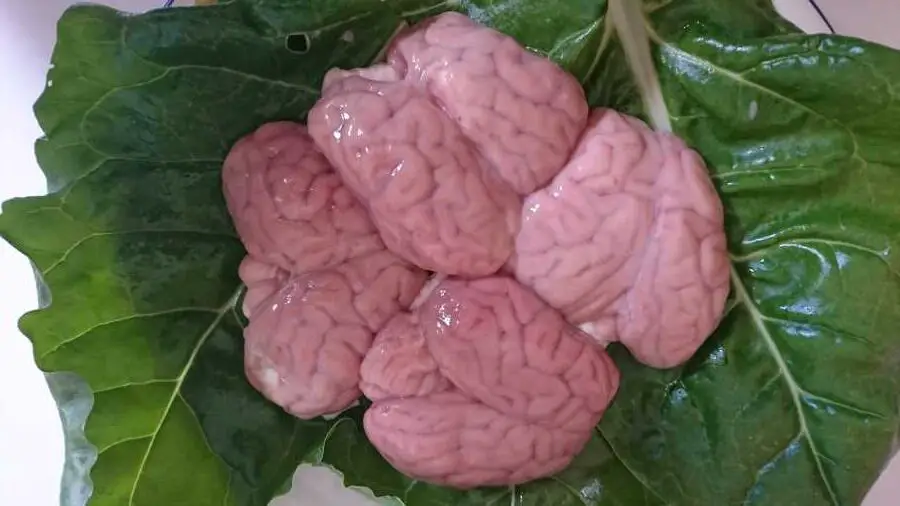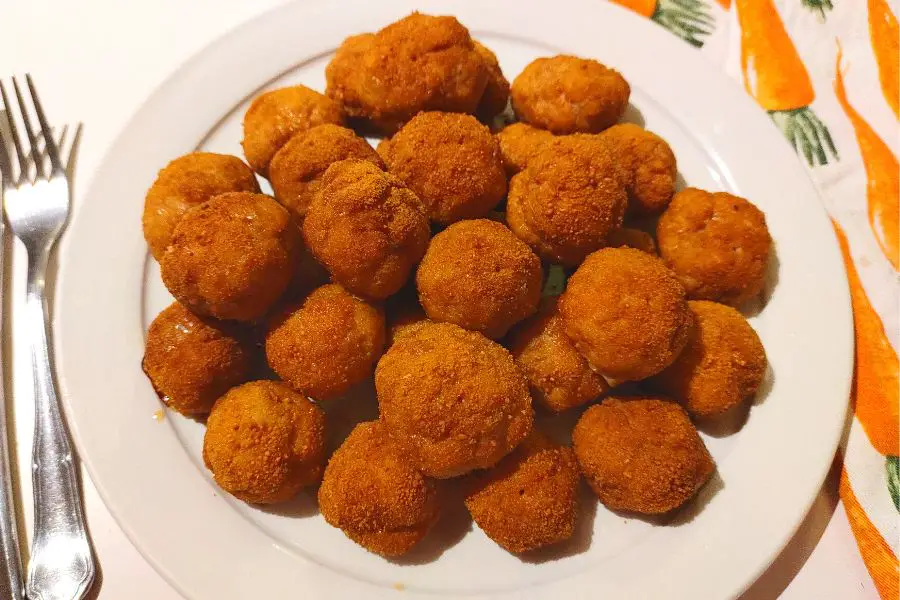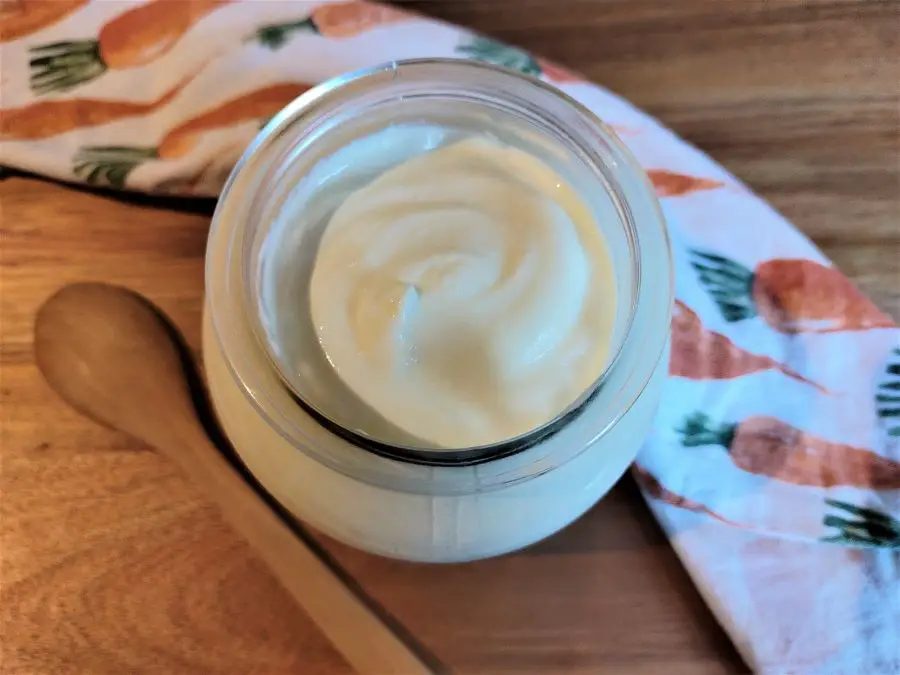This post covers why brains are a very nutritious addition to your carnivore diet and a few simple ways to enjoy them.
Why brains are so good for you
Brains are nutrient dense, high in omega 3 and vitamin C
The table below shows the nutrients in beef, lamb, and pork brains.[1]
Like other organ meats, brains are a good source of an extensive range of vitamins and minerals such as vitamin C, riboflavin, niacin, vitamin B12, vitamin B6, pantothenic acid, iron, phosphorus, copper, and selenium.
Though brains are not as impressive as livers in terms of overall nutritional contents, they are especially high in omega 3 fatty acids and they are great for those who can’t eat fish, can’t afford to buy wild-caught fish, or don’t like fish.
They also have much higher vitamin C contents than muscle meat. If you fry them lightly, their vitamin C won’t be destroyed and just a 100 gram serving of brain will give you enough vitamin C to prevent scurvy.
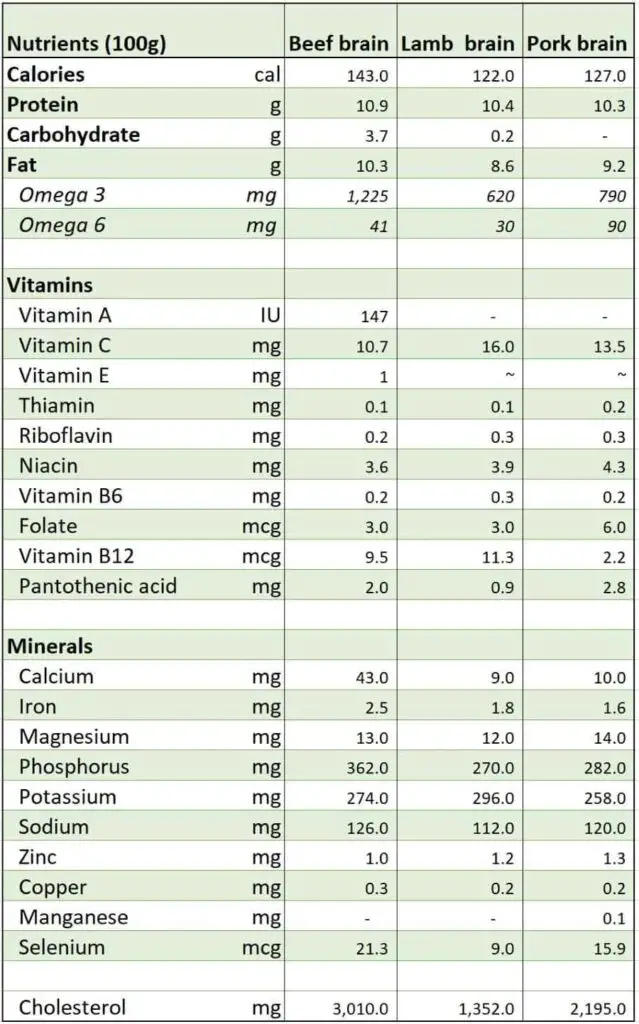
Brains are high in cholesterol
Brains are especially high in cholesterol but this is something that you definitely don’t need to worry about.
Cholesterol is essential for human life. It is an important component of the cell membrane and contributes to the structural makeup of the membrane as well as modulates its fluidity.
Cholesterol functions as a precursor molecule in the synthesis of vitamin D, steroid hormones, and sex hormones. Cholesterol is also a constituent of bile salt used in digestion to facilitate the absorption of fat-soluble vitamins A, D, E, and K.[2]
Because of its critical role in the proper functioning of the brain, your brain is the most cholesterol-rich organ, it contains about 20% of the whole body’s cholesterol.[3] It’s the same reason why animal brains are rich in cholesterol.
Cholesterol is so important that if you don’t get enough of it from dietary sources, your body will make it.
You might wonder why you’ve been told all your life that cholesterol is bad for you and that you should avoid all cholesterol-rich food?
It all started with a flawed observational study of seven countries by Ancel Keys in 1952 which shows an association between saturated fat consumption and risk of heart disease. However, Ancel Keys left out 15 countries that did not support his hypothesis. When all 22 countries were included, no such association is found.
If you are interested, please read the series Ancel Keys’ Cholesterol Con by professor Tim Noakes here.
Meanwhile, several studies show that high cholesterol is associated with lower mortality risks while low cholesterol increases many health risks.[4, 5, 6, 7, 8, 9, 10, 11, 12, 13, 14, 15, 16]
Cholesterol is a big and important topic and I will definitely cover it in a separate post in the future.
Carnivore brain recipes
Lamb brains are usually what I can find at the butcher. Pork brains are rare. I’ve never found beef brains available, probably due to the fear of mad cow disease.
The recipes below use lamb brains but you can certainly substitute for other kinds of brains if you happen to find them in your area.
1. Parmesan-crumbed lamb brains
The recipe below is adapted from this one and I have removed all the herbs, spices, and bread crumbs.
Ingredients
- 4 lamb brains
- 2/3 cups of parmesan grated cheese
- 2 tsp sea salt
- 1 egg, beaten
- 1 tbs cooking oil (preferably ruminant fat).
Note:
- Because lamb brains are very delicate, they are usually sold frozen. Please defrost them well ahead before you plan to cook them
- Please look for the parmesan cheese with only these ingredients: milk, salt, starter culture and enzyme (rennet) and avoid those with preservatives, artificial colors and flavors, cellulose powder, potassium sorbate, and potato starch).
Instructions
- Remove brain stems using a sharp knife. Soak the brain in cold water for 2 hours to draw the blood out
- Place the brains in a pot filled with 1 liter of water and 2 tsp salt. Bring to the boil then reduce heat and simmer for 4 minutes. Drain, let them cool down for 10 minutes and pat dry using paper towels
- Cut the brain into bite size, dip them into the egg wash and then coat them well in the parmesan cheese
- Heat oil in a thick base frying pan. When oil is bubbling, add the brain pieces and cook until golden brown. You can also deep-fry them but I prefer pan-fry.
I made these for my children recently on Halloween and they thought they were very delicious.

2. Lamb brains and scrambled eggs
Ingredients
- 2 lamb brains
- 4 eggs, beaten
- 2 1/4 tsp sea salt
- 1 tbs butter
- 1 tbs cooking oil (preferably ruminant fat).
Instructions
- Remove brain stems using a sharp knife. Soak the brain in cold water for 2 hours to draw the blood out
- Place the brains in a pot filled with 1 liter of water and 2 tsp salt. Bring to the boil then reduce heat and simmer for 4 minutes. Drain, let them cool down for 10 minutes and pat dry using paper towels
- Cut the brain into bite size
- Heat oil in a thick base frying pan. When oil is bubbling, add the brain pieces and cook until brown on both sides. Transfer to a plate
- Reduce heat to low, melt butter in the frying pan until it’s frothy. Pour the beaten eggs in the pan. Sprinkle in ¼ tsp salt if desired. Stir with a wooden spoon or spatula in slow circular motions around the pan. When the eggs are still soft and silky, add the brain pieces, mix well and transfer to a plate.
If your kids can get over the yuck factor, this is a very nutritious omega 3 rich breakfast and a great brain food which may even make them smarter!
My mother often says ‘like nourishes like’ – she means eating hearts is good for your own heart, eating livers is good for your own liver, eating kidneys is good for your own kidneys, and so on.
I don’t know how true that is but a high-protein breakfast full of good fat will have no problem lasting your children until lunch and they definitely won’t need any sugary snacks in between.
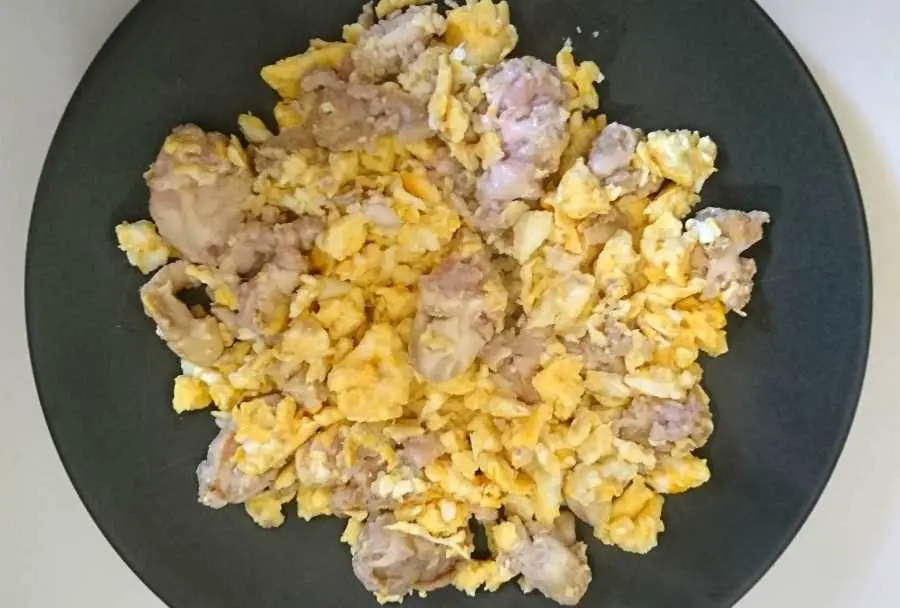
3. Seared lamb brains
This is usually the way I’d cook lamb brains for myself: heat a frying pan until very hot but not burning, add a tablespoon of beef fat, sear both sides for about a minute each.
I can get a bit of vitamin C out of the lamb brains because of the short cooking time. I don’t need to add salt or seasonings for flavor.
Lamb brains have a mild savory taste and do not have a strong offal taste like liver and kidneys and I think even people who are new to organ meat can enjoy them.
4. Other ways of incorporating lamb brains in your diet
There are many other ways to enjoy lamb brains, for example:
- Lamb brain pancake: Blend 4 eggs, 1/2 lamb brains and 1 cup of grated cheese and you will have a nutritious pancake batter. Proceed to cook the pancakes as you would for ordinary pancakes
- Meat and lamb brain stew. Simply adding them to meat stew when you are almost done cooking the meat because lamb brains don’t need much cooking time.
- Fried lamb brains and bacon. Poach 4 lamb brains, cut into small pieces and fry them as per instruction in the Lamb brains and scrambled eggs recipe. Fry 1/2 cup of bacon bits till crisp, add the cooked lamb brains, mix well and you are done. Bacon can enhance the flavor of many carnivore dishes, but you do need to limit bacon consumption
- Lamb brain meatballs or burger patties. Add one lamb brain (mashed or blended) to one pound of ground meat and make your meatballs or burger patties as usual
If you enjoy this recipe, please consider sharing it with your family, friends, and followers, that would be much appreciated. Please also check out my other carnivore diet recipes here which are updated regularly.
Disclaimer: The information in this post is for reference purposes only and not intended to constitute or replace professional medical advice. Please consult a qualified medical professional before making any changes to your diet or lifestyle.

